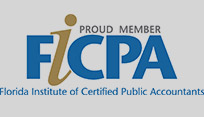If you have a unique job that lacks a steady income, you probably have an unconventional budget. This is the case for many freelance workers. Around 55 million Americans freelance, and a quarter of those people freelance full-time.
Irregular paychecks make budgeting tough, but they also make budgeting essential. These three tips can help freelancers create realistic spending plans.
1. Track your cash flow.
Employees with regular paychecks usually know their exact monthly income. For freelancers, it’s more difficult. To make the guessing game a little easier, record each job, the date you invoice your client, and when the invoice is paid. That way, no money will be lost.
In addition, it’s important to keep track of your personal expenses, either in a budgeting program or a planner. This will let you know how much you’re spending each month versus what you’re making.
2. Make financial priorities.
The 50/30/20 budget is a great way to divide your income, even if that income is unpredictable. Using this model, you’ll spend 50% of your income on needs, such as housing, food, transportation, and insurance. The next 30% of your income can be spent on wants, such as clothing, a gym membership, concert tickets, or hobbies. The last 20% goes toward savings goals and debt payments.
3. Start with baby steps.
Complicated tracking systems never work out. Baby steps are key. Start with a simple spreadsheet or free service. Level Money in a great bare-bones budgeting app that shows how much you have to spend at any given moment. Mint allows you to track spending and pay bills. Both programs are free, and they’re great starting points.






